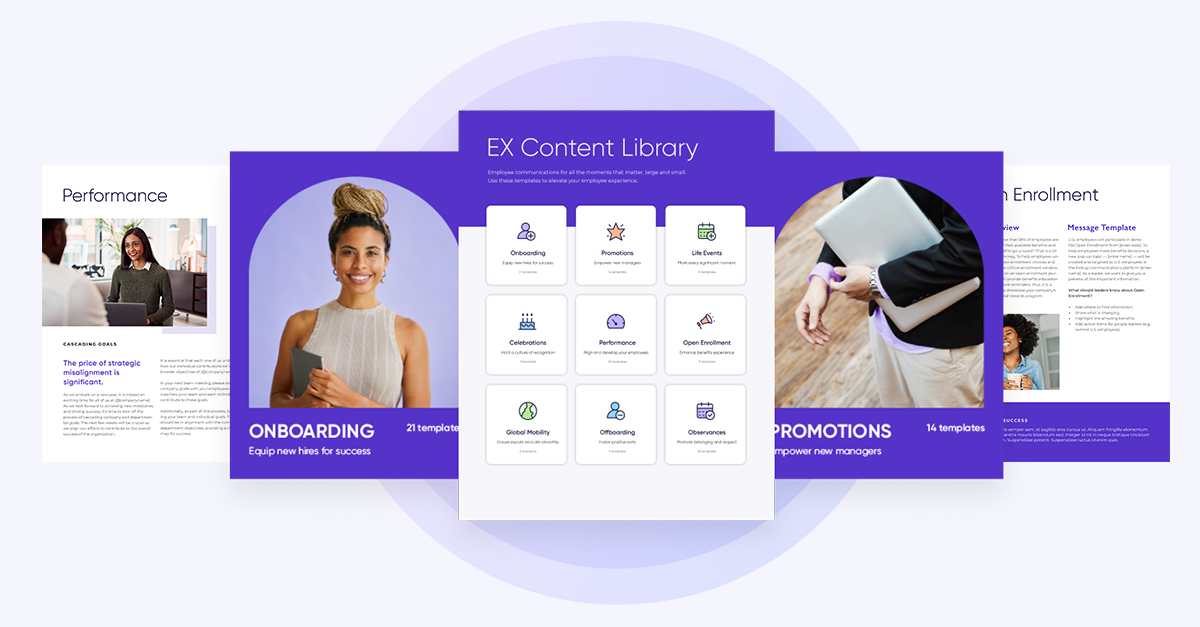We’re all experiencing “information overload,” thanks to a world with no lack of information, 24/7. A key reason for this is that our world has changed, and along with it, how we communicate and, indeed, define “information.” Today, anyone with an opinion on just about anything also has multiple communication channels and forums available to them to share that viewpoint.
Our employers need to adapt their own communication to us in this new world so that the information we receive is timely. They, too, are adopting similar communication principles and channels that we use in our personal lives. It is well-intentioned, of course, but this constant onslaught of information (perhaps exacerbated by COVID)—aside from potentially causing us the stress of “staying on top of” all the information—is also impacting our productivity. Firstup research shows that in organizations with over 3000 employees, on average, companies have 187 employee apps that they use to share information. The result? Over 120 hours per employee is wasted each year just from moving across different applications—costing businesses a staggering $14 billion yearly.

There’s got to be a better way
At the recent Engage Employee Internal Communication Conference in London, I met up with Chris Woods, Head of Digital and Content at the global alternative asset manager, ICG, to understand the firm’s approach to internal communications.
ICG is doing Internal Communications differently. Due to a team change that incidentally coincided with the start of COVID, they took the opportunity to rethink and refresh the company’s traditional approach to Internal Communications. As Chris said, the team started from “a blank sheet of paper,” identifying the goal of internal communications as “adding value” and not just creating content and communications for the sake of it. To this end, this team of about eight people purposefully went around the business to ask the leaders what was working and what wasn’t from an internal communications standpoint.
The feedback has informed a more strategic approach to communications enabled by technology. The Firstup platform—called “Spark” at ICG—has transformed internal comms. Spark is a single global app that every employee can use securely on a device of their choosing and at a time that suits them best.
The team has consciously moved away from the run-of-the-mill, back-office type of internal communications, such as events taking place in the office globally or typical HR announcements, to communications that are of genuine interest to employees.
Delivering value
From the perspective of “value,” when employees find a tool or information useful, they engage. The most popular channel on Spark today is “Investment News,” a vehicle that informs employees of the investments that the company is making as a business.
Especially in the absence of those “informal conversations in the lift” moments, the internal comms team is in the process of setting up a private channel in Spark, where employees can discuss topics that are pertinent to them or their area of work in a secure and familiar environment. Employees are also able to opt in and out or follow and unfollow information streams—much like they do on personal social media platforms. The team foresees this channel as a way for employees to share experiences and educate each other informally. It’s a much better way of providing training and education, as opposed to publishing copious PDFs on a subject or topic.
Reducing information overload is a priority. The team is paying great attention to the curation, identification, and dissemination of communications to over 600 employees who are spread across 15 offices throughout the world. Chris cited an interesting anecdote that initiated this thought process. ICG decided to give the whole company globally Christmas Eve off, or an alternative day depending on an individual employee’s beliefs. However, contractual obligations meant this wasn’t possible in one of ICG’s countries.
It was a learning experience on multiple counts, but most pertinently, that a global, blanket approach doesn’t always work. A company announcement that is only relevant to the Singapore office needn’t go worldwide. Similarly, if there are yoga lessons every Wednesday in the London office, there’s no need for that communication to reach all the other sites.
The solution
ICG is creating mini versions of Spark by country, enabling the IC team to significantly reduce information overload, ensure content relevance, and add value through communications.
This also illustrates the value of technology platforms for communications—it helps organizations course correct and incrementally evolve communications in near real-time to improve workforce engagement persistently and diligently. It’s a proven fact that an engaged and healthy workforce is also a motivated and productive workforce.
Explore more of our conversation from the Internal Communications Conference







